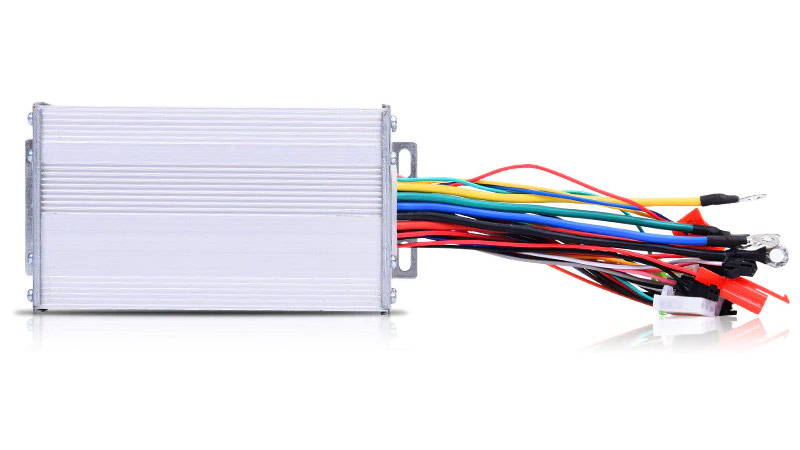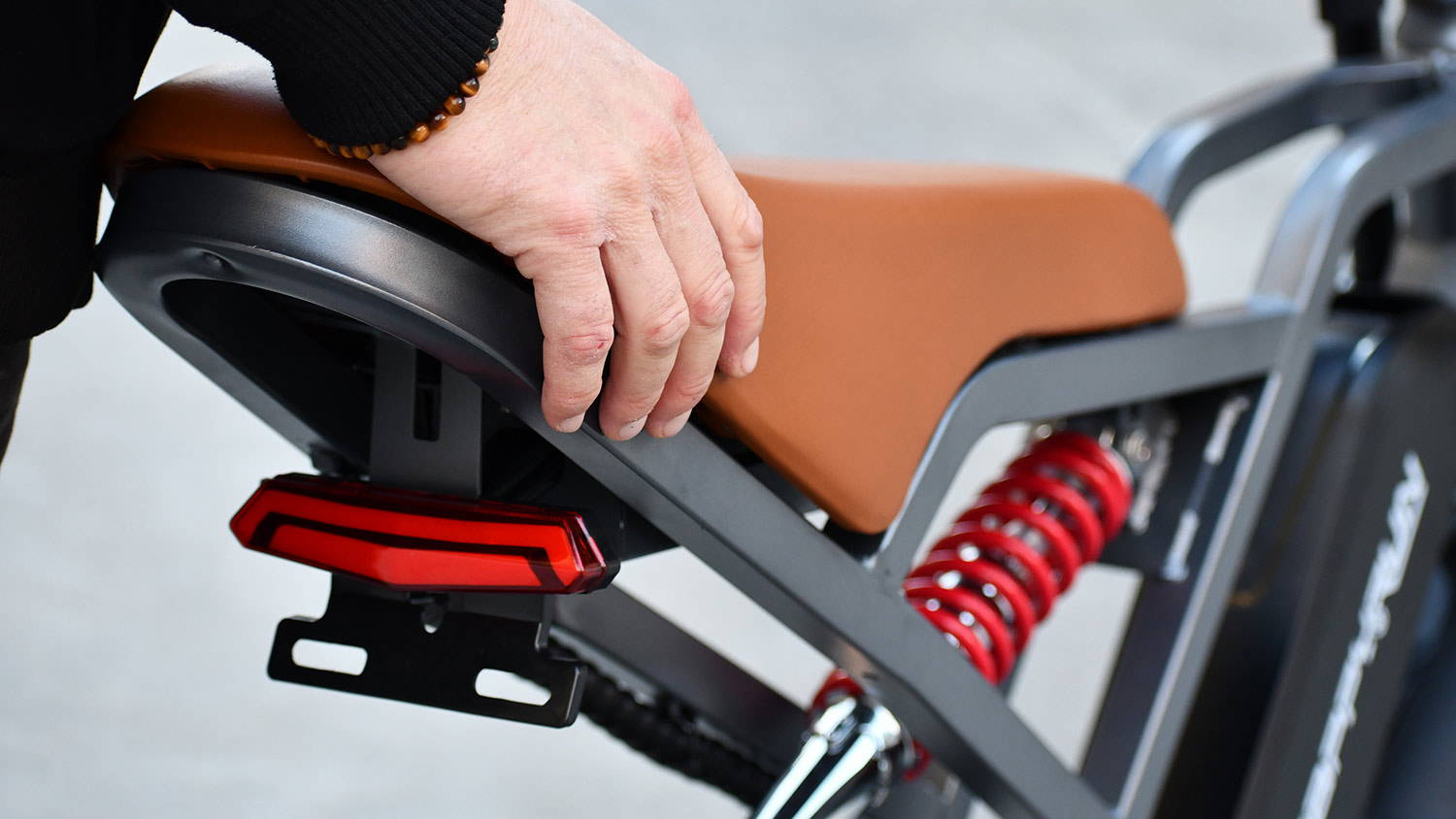
E-Bike Brain: Decoding Controllers and Software
Understanding e-bike controllers and software is essential for optimizing your riding experience. These components manage power delivery, enhance performance, and provide features that make cycling more enjoyable. Knowing how they work can help you make informed decisions about your e-bike setup.
E-bikes have transformed personal transport, with the best electric bike options allowing people to ride further far easier than ever. Even for regular bikers it has opened up new opportunities, allowing them to climb steeper slopes, go faster and train harder.
Today, there are so many new models to choose from, whether you are looking for a simple E-bike to get to work on, or a mountain E-bike for conquering nature, you can look at dozens of different models. But while ebike reviews can help, they don’t always highlight the importance of the heart of any E-bike, the controller and software that drives it all.
There are a number of options out there, but what do they really do, and how much do they impact your riding experience? Today we are going to take a look at ebike controllers to get a better understanding of why they are so important.
What Is an E-Bike Controller and How Does It Function?
An e-bike controller is the central unit that manages the flow of power from the battery to the motor. It interprets signals from various components, such as the throttle, brake levers, and pedal assist sensors, adjusting power output accordingly. This ensures a smooth ride by controlling speed, torque, and battery consumption effectively.Diagram: Overview of E-Bike Controller Functions
E-Bike Controllers

The Brain of E-Bikes: The Controller
While they come in different forms, every electric bike for adults or children has a controller that makes everything work as you expect it to. The controller is essentially a computer dedicated to one task, running the bike. That means deciding how much power the motor provides to help you, maintaining battery condition and so on. The pedal-assist sensors, the throttle, battery and motor itself all link to the controller, and for the best electric bike models, it is this controller and its software that make all the difference.
The software within the controllers is calibrated for each bike to optimize performance and monitor a range of actions including:
- Temperature – Monitor the electrics and motor, shutting down power if it detects overheating.
- Current Protection – Can cut power if excess current is drawn as this can damage the motor.
- Voltage Regulation – Monitors and controls voltage to prevent both too high or low voltage to protect both battery and motor.
- Peddle Assist – How much power the system provides to help you peddle.
- Brake system – Sensors show how much brake is being applied and shits down the motor so it isn’t forcing you forward as you try to slow down.
- Screen – The controller powers the screen providing all the essential information you need.
There are two main types of motor controllers today, Brushed and Brushless. While some very basic bikes still used brushed motor controllers, the majority on the market now, and certainly all of the best electric bike options, use a brushless electric motor controller.
How Do E-Bike Controllers Manage Power and Speed?
E-bike controllers manage power and speed by regulating the current drawn from the battery. They adjust motor output based on rider input, such as throttle position or pedal-assist level, allowing for controlled acceleration. Additionally, they incorporate safety features to prevent overheating and ensure efficient energy use during rides.
E-bike controllers manage power through several core functions:
- Power Regulation: They control how much energy is drawn from the battery, preventing overheating while optimizing efficiency.
- Speed Control: By interpreting user inputs, controllers adjust motor speed to maintain a consistent riding experience.
- Safety Features: Modern controllers include protections against overcurrent and low voltage, ensuring rider safety.
Sine or Square Wave?
In addition, controllers offer a couple of ways of controlling motor output. Sine wave controllers are the more expensive option, but provide better efficiency, especially under load, such as when climbing. They also allow the motor to run more quietly than the cheaper, square wave controllers too, and are smoother in operation. However, sine wave controllers not only cost more than square wave alternatives, but they also consume more power and need to be matched to a specific motor type.
By contrast, the cheaper square wave options offer a less precise power management on the throttle and tend to run at higher voltages, with steps in the power delivery that cause ‘jumps’ in progress sometimes. However, they work with any motor, and while can use less power, are not as good as sine wave under heavy load. You can find the best electric bike for adults with either option, depending on use. For an electric mountain bike, where climbing and heavy load is common, sine wave makes more sense, but commuter bikes are more about consistent but lighter loads, and here the best electric bike may have a square wave controller.
To summarize:
Sine Wave Controller:
- Great under load such as climbing
- Less Noise during operation
- Smoother power delivery
- Consumers more power
- Needs to be matched with a motor
- More expensive
Square Wave Controller:
- Cheaper
- Works with a range of different motors
- Better efficiency for lighter loads
- Louder noise
- Can have power spikes that causes jumps in acceleration
- Poor efficiency under heavy loads
If you are looking for a new controller for your best ebike, or scanning ebike reviews, think about how you use your bike to see which type would be the preferred option for you.
Hall Sensors
If you have a bike with a motor equipped with hall sensors, it needs a controller designed for them. Hall sensors use magnetic fields, rather than any sort of mechanical or electrical resistance, to identify the rotation of the motor, and require a controller and software designed to interpret those inputs correctly.
A hall sensor offers a smoother, more precise read of the motor speed and so on, and uses much less voltage than other sensor types too, so there are significant advantages, and the best electric bikes usually have hall sensor motors fitted.
Fitment to the bike

Placing the controller under the seat is a wise choice
The final thing to think about with controllers is how they fit the bike. With an electric bike for adults there are a few options. Some mount directly to the battery, others are houses in a control box fitted to the bike, often seen on bikes with a battery that is located within the bike frame, normally the downtube. Finally, there are the mid-drive controllers, that are integrated into the motor itself.
They all work the same, and which is right for you will depend on the bike. However, mid-drive controllers can be awkward, as a service means dismantling the motor to some extent as well, so if you are looking for the best electric bike for long term use, avoiding those can be a sensible choice.
What Are the Key Features of Modern E-Bike Software?
Modern e-bike software includes features like GPS tracking, Bluetooth connectivity, and app integration. These allow riders to monitor performance metrics, receive maintenance alerts, and customize riding modes. Some systems also support over-the-air updates, enhancing functionality and ensuring that the bike remains up-to-date with the latest improvements.
Modern e-bike software enhances functionality through various features:
- Real-Time Data Tracking: Many e-bikes now come with apps that provide live updates on battery status, speed, and distance traveled.
- Firmware Updates: Regular software updates can improve performance, introduce new features, and enhance safety protocols.
- User Customization: Some systems allow riders to customize settings for a personalized riding experience.
Here is a chart summarizing the key features of modern e-bike software based on the provided information:
| Feature | Description |
|---|---|
| GPS Tracking | Enables real-time location tracking for navigation and theft prevention. |
| Bluetooth Connectivity | Facilitates connection to smartphones for data sharing, diagnostics, and firmware updates. |
| App Integration | Provides access to performance metrics, route planning, and ride tracking through dedicated apps. |
| Real-Time Data Monitoring | Displays live updates on speed, battery status, and distance traveled directly on connected devices. |
| User Customization | Allows riders to adjust settings for personalized riding experiences, including pedal assist levels and ride modes. |
| Firmware Updates | Supports over-the-air updates to enhance performance and introduce new features without physical service visits. |
| Predictive Maintenance | Alerts riders about potential maintenance needs before issues escalate, improving bike longevity. |
| Regenerative Braking Systems | Captures energy during braking to extend battery life and improve efficiency. |
This chart highlights the essential features that modern e-bike software offers, enhancing the overall riding experience and functionality of e-bikes.
How Can IoT Devices Improve Your E-Bike Experience?
IoT devices can enhance your e-bike experience by providing real-time data on speed, distance, and battery status through connected apps. They enable predictive maintenance alerts, helping riders address issues before they escalate. Additionally, IoT integration can offer personalized riding experiences by adjusting settings based on user preferences and behavior.
IoT devices connected to your e-bike can significantly enhance your riding experience by providing:
- Remote Diagnostics: Instant access to system diagnostics helps identify issues before they become serious.
- Tracking Features: GPS tracking can assist in route planning and theft prevention.
- Enhanced Communication: These devices facilitate better interaction between your bike’s components, leading to improved performance.
What Steps Are Involved in Programming an E-Bike Controller?
Programming an e-bike controller typically involves connecting it to a computer or mobile device via USB or Bluetooth. Users can then adjust settings for speed limits, pedal-assist levels, and battery management parameters using specialized software. Following programming, it’s essential to test the settings to ensure optimal performance and safety during rides.
Programming an e-bike controller involves several steps:
- Connect to a Computer: Use a USB-to-serial adapter to link the controller to your computer.
- Launch Programming Software: Open the appropriate software designed for your specific controller model.
- Adjust Parameters: Modify settings such as power output, pedal assist levels, and speed limits according to your preferences.
Buying Tips for E-Bike Controllers and Software
When purchasing e-bike controllers or software:
- Research Compatibility: Ensure that any controller or software you buy is compatible with your e-bike model.
- Read Reviews: Look for user feedback on performance and reliability.
- Consider Brand Reputation: Brands like HappyRun, known for their innovative designs over nine years, offer reliable options for e-bike components.
E-Bike Expert Views
“E-bike controllers are crucial for optimizing performance,” says cycling expert John Doe. “Understanding how they work allows riders to tailor their experience for better efficiency.” He emphasizes that staying updated with software improvements can significantly enhance safety and functionality.
Conclusion
Its something we take for granted and ebike reviews tend to ignore mostly, but a good controller is essential if you want to find the best electric bike for your needs. If you have a bike and are thinking of changing controllers, then remember to look at how and where you ride, as well as how your current controller fits to the bike.
For people who do a lot of climbing and other heavy load applications, then a sine wave controller in a suitable fitment is ideal. If you are more about acceleration and light loads on your commute, a square wave option may be just what you are looking for.































Can I put the controller of a Happy Run G300 into the Happy Run 100 Pro? I’m trying to get more torque out of my 100 Pro.
Leave a comment